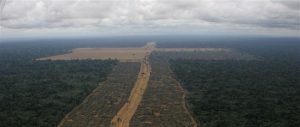Many of us are used to thinking about the nutritional content of the food we eat every day. We have heard the mantra about eating fruit and vegetables and maintaining a balanced diet – not too many sweets, chocolates and fizzy drinks.
But how often do we think about the environmental impact of the food we eat? Far from being a minor issue, some studies have estimated food choices contribute as much as 30% of our individual carbon footprint.
What we choose to eat every day has, collectively, a major environmental impact. From the amount of water and fertiliser needed to produce a grain of rice, to the amount of animal feed and manure needed and produced by every kilogram of pigmeat we eat.
The US-based NGO, The Environmental Working Group (EWG) has estimated that food derived from methane-generating ruminant animals such as sheep and cows have the highest levels of greenhouse gas emissions.
By contrast, chickens generate fewer emissions as they require less animal feed to produce the same amount of meat. Alternatives to meat such as lentils, nuts and tofu have even lower associated emissions.
"Very few people think about food in this way," says New York University technology student Sam Slover, who has developed a project to help people visualise their food footprint.
"You get the well-intentioned person who may drive a Prius, use low-energy appliances, and pat themselves on the back, but still eats tonnes of beef or lamb and not even realise what they’re doing to the environment by buying into those resource-intensive systems."
Using data from the EWG, Slover has created an online application that allows people to work out the carbon footprint of their everyday meal. He hopes the act of actually creating your own meal and playing with the animation tool will raise awareness of the issue.
"The main message I’m hoping people take is to just be aware that the food they eat and the systems they buy into have real environmental consequences. If people are aware, they’re more likely to change their habits for the better (and hopefully talk to others about it too!). It’s an awareness project above all."
The foodprint application proved popular with children when Slover demonstrated it at the New York University ITP Winter Show in December 2012. He is now considering developing a new version using nutritional data to help people understand both the nutritional and environmental impact of their food choices.


